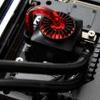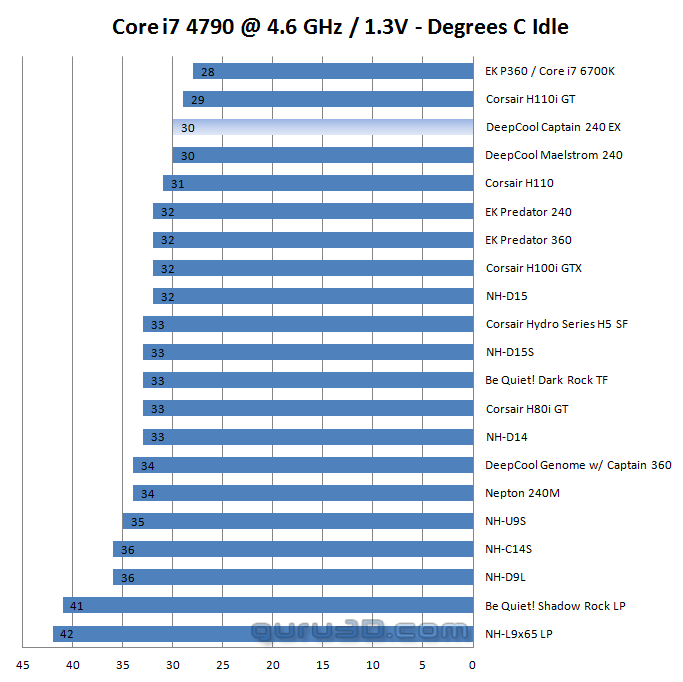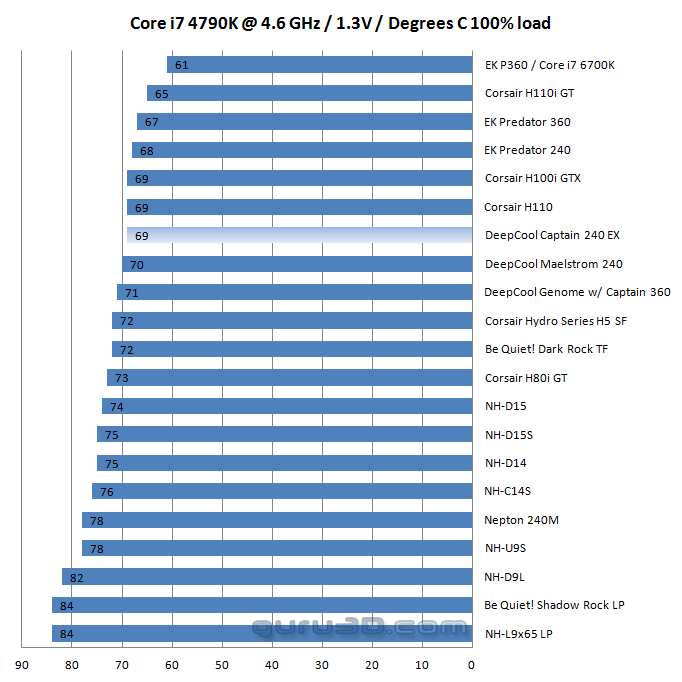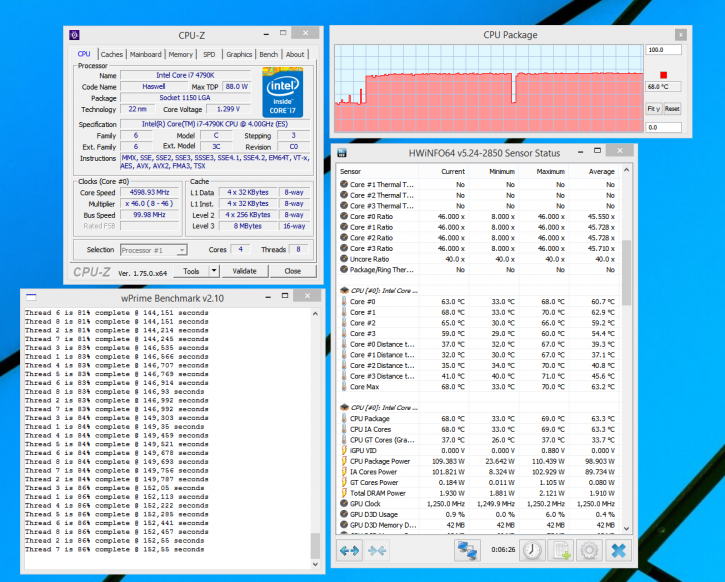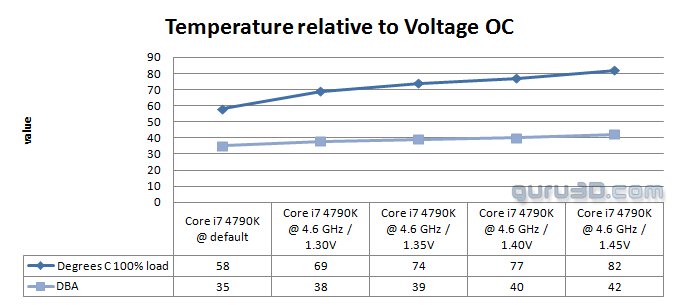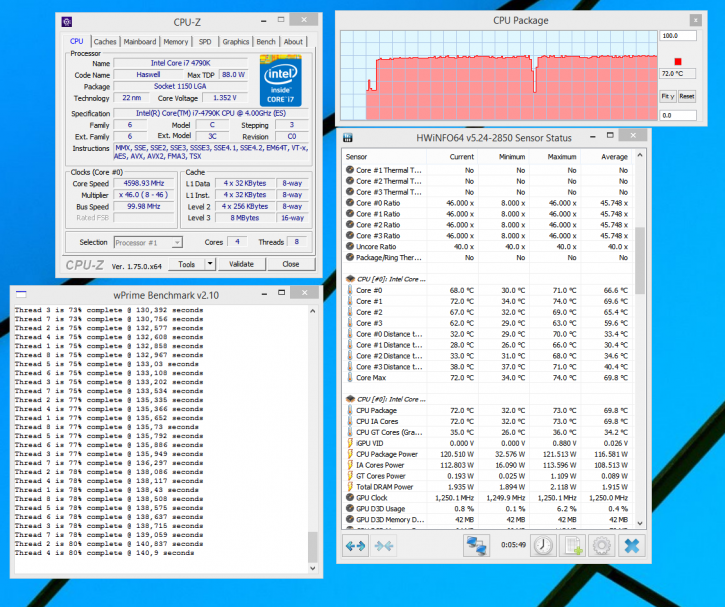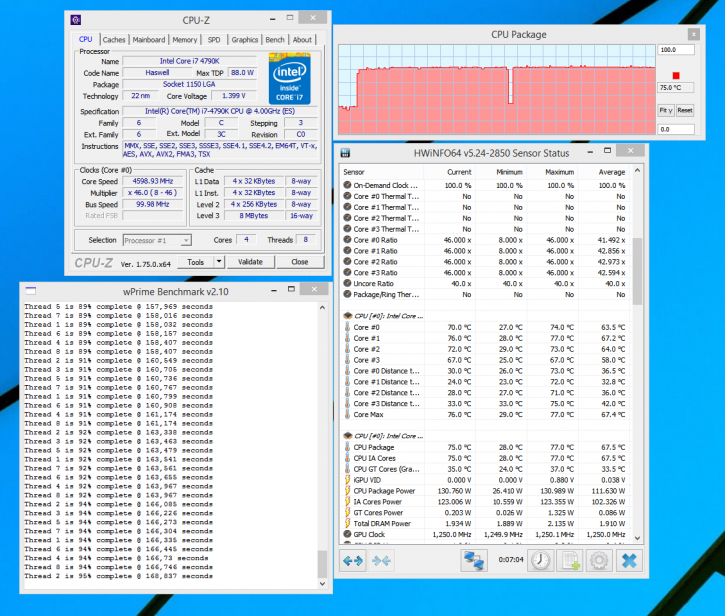Core i7 4790K OC at 4600 MHz 1.3 Volts
Now we up the ante. Understand that 1.3V and higher voltages are the levels where Haswell processors get into serious problems due to the aforementioned heat-spreader versus TIM design applied solution from Intel. We now set the Core i7 4790K @ 4600 MHz and apply 1.30 volts on the CPU while loading it with 100% stress for wPrime 1024M to run on all available CPU threads three times.
Core i7 4790K OC at 4600 MHz 1.3 Volts - IDLE
Below, you can see the IDLE results with the Core i7 clocked at 4790K @ 4600 GHz with 1.30 volts on the CPU. Again, the results are the IDLE temperatures thus you are in your desktop doing pretty much nothing.
Core i7 4790K OC at 4600 MHz 1.3 Volts LOAD
Now we'll be testing the temperatures under fully threaded stress. If we set the overclock at 4600 MHz and configure CPU Voltage at 1.3V, these are the results.
The temps normally rise above and beyond 90 Degrees C for a lot of heatpipe based coolers, which is a definitive no-no. As you can see, we have dangerous temperatures for most coolers. Very few coolers and kits can actually manage a Core i7 4970K @ 1.3+ Volts / 4600+ MHz temperature wise well enough. The Noctua is keeping the CPU relatively cool under that condition, not at all bad for heatpipe based cooling really.
We run wPrime 2 times, at the last run we measure the peak temperature which was 75 Degrees with a Core i7 4790K and 1.3 Volts in the CPU (we measure package temperature). I'd be OK with this temp for an long term overclock, as long as it remains at ~75 Degrees C.
Extended Tweaking
Since this mm solution harbors some of extra cooling capacity I extended overclocking to higher voltages as well.
The above numbers are just for reference only e.g. how does a 4790K behave with increased voltages at a 4600 MHz clock frequency. We can run the unit towards 1.40~.145 Volts on the processor (which is a lot for this CPU!). At this stage the system still boots and can finish two wPrime stress runs. Typically at 1.35~1.40 Volts and a good enough processor, you are in the 5 GHz range (if your CPU is capable).
After 1.35 Volts the fans will start to spin a notch faster, 39 DBa however is a relatively silent airflow level from an audible point of view. At 1.40 Volts in the CPU the processor starts to heat up faster and here things will become more noisy as fan RPM will ramp up to 80% or higher, but even then 40 DBa is considered to be close to silent. m1.45 Volts is not recommended, but it did finish three Prime 1024M runs perfectly fine.
